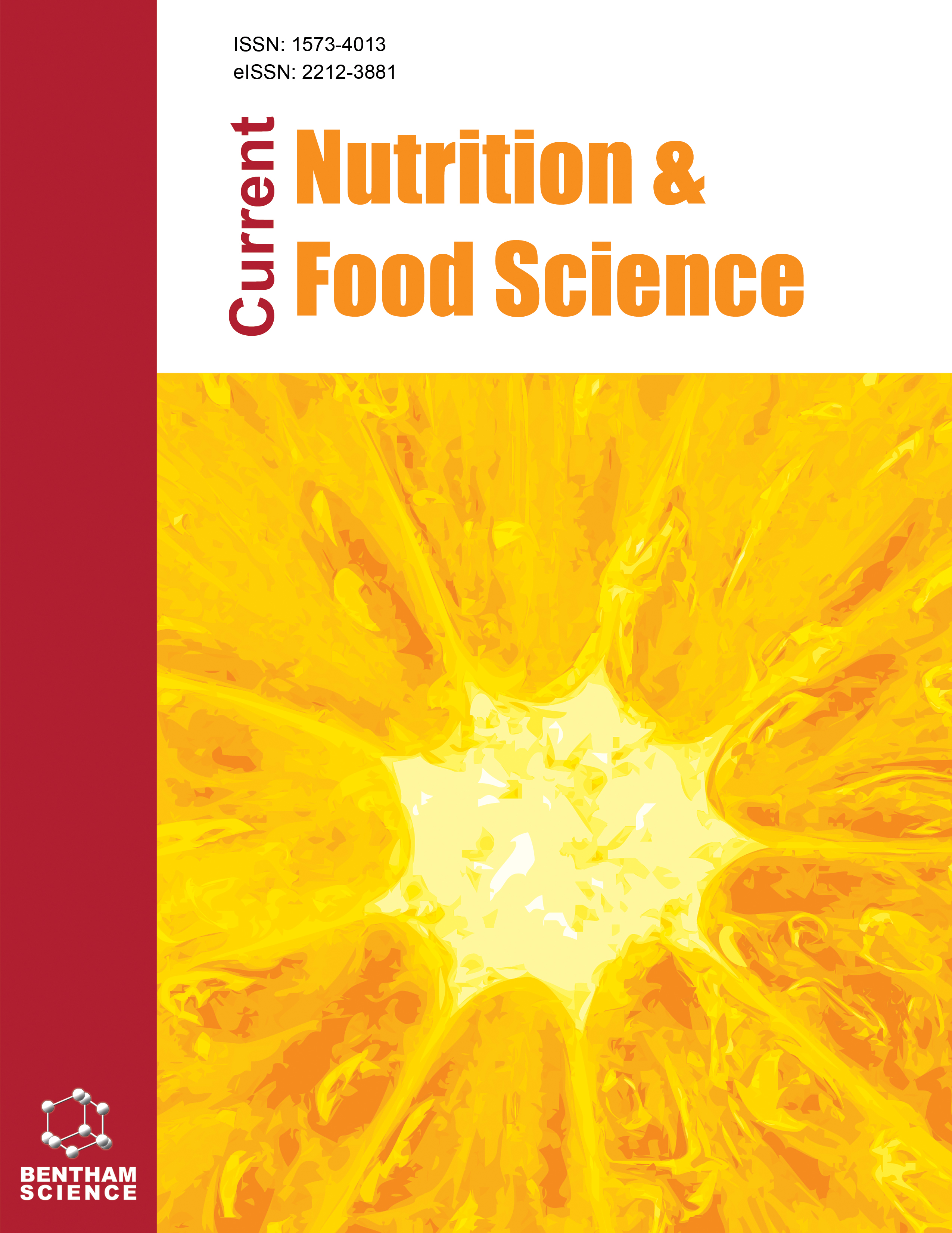- Home
- A-Z Publications
- Current Nutrition & Food Science
- Previous Issues
- Volume 4, Issue 1, 2008
Current Nutrition & Food Science - Volume 4, Issue 1, 2008
Volume 4, Issue 1, 2008
-
-
Editorial
More LessBy Fidel ToldraThe third year of Current Nutrition & Food Science has been completed after the publication of 4 issues in 2007 with a total number of 32 manuscripts + 4 editorials. We have followed the standard publication procedure consisting of one issue per trimester but this year with three special issues. We are very happy and thankful for the support received from our Editorial Advisory Board members as well as from ma Read More
-
-
-
Beneficial Actions of Polyunsaturated Fatty Acids in Cardiovascular Diseases: But, How and Why?
More LessOmega-3 fatty acids, eicosapentaenoic acid (EPA) and docosahexaenoic acid (DHA), and to a limited extent ω- 6 fatty acids: arachidonic acid (AA), γ-linolenic acid (GLA) and dihomo-GLA (DGLA), prevent cardiovascular disease, thrombosis and atherosclerosis, reduce cardiac arrhythmias, lower plasma cholesterol and triglycerides, lower high blood pressure and improve endothelial function. These beneficial actions of the fatty a Read More
-
-
-
Regulation of Ingestive Behavior, the Upper Gastrointestinal Motility and Gastric Acid Secretion by Ghrelin in Mammals
More LessAuthors: Chih-Yen Chen, Mineko Fujimiya, Akihiro Asakawa, Shou-Dong Lee and Akio InuiGhrelin, a novel 28-amino acid peptide, was recently identified as the first endogenous ligand for growthhormone secretagogue receptors (previously known as orphan receptors), and discovered by “reverse pharmacology”. The ghrelin peptide features a unique post-translational modification of O-n-octanoylation at serine 3, and is secreted from X/A cells in gastric oxyntic glands into the blood circulation. Two majo Read More
-
-
-
Use of Total Parenteral Nutrition in Severe Anorexia Nervosa Complicated by a Gastrointestinal Illness
More LessAt present there is no consensus on how to refeed patients with severe anorexia nervosa. Staged progressive oral feeding programs, enteral feedings and total parenteral nutrition have been utilized to facilitate recovery. Although most patients with anorexia nervosa should be refed with a dietary program which is based on progressive increases in oral calories, total parenteral nutrition should be judiciously considered for t Read More
-
-
-
Screening Strategy for Iron Enhancers: Increasing Iron Bioavailability
More LessAuthors: Silvia Miret, Bernd v. Buuren, Guus Duchateau and Werner KlaffkeIron deficiency is the most common nutritional disorder in the world. It is estimated that 2 billion people are anaemic. Approximately 50% of infants, school-age children and women of reproductive age suffer from iron deficiency anaemia in some countries of South Asia, compared to about 25% in Latin America and 10% in the industrialised countries of Europe. Iron deficiency is a result of the imbalance between the a Read More
-
-
-
Dietary Factors Influencing Magnesium Absorption in Humans
More LessBy Torsten BohnDecreased Mg intake and low Mg status have been associated with a number of major health concerns such as diabetes mellitus type II, coronary heart disease, and osteoporosis. While information on Mg intake is available, relatively little is known on dietary factors influencing Mg bioavailability. While it is established that Mg absorption is based on a combination of a non-saturable and a saturable pathway, the natu Read More
-
Volumes & issues
-
Volume 21 (2025)
-
Volume 20 (2024)
-
Volume 19 (2023)
-
Volume 18 (2022)
-
Volume 17 (2021)
-
Volume 16 (2020)
-
Volume 15 (2019)
-
Volume 14 (2018)
-
Volume 13 (2017)
-
Volume 12 (2016)
-
Volume 11 (2015)
-
Volume 10 (2014)
-
Volume 9 (2013)
-
Volume 8 (2012)
-
Volume 7 (2011)
-
Volume 6 (2010)
-
Volume 5 (2009)
-
Volume 4 (2008)
-
Volume 3 (2007)
-
Volume 2 (2006)
-
Volume 1 (2005)
Most Read This Month
Article
content/journals/cnf
Journal
10
5
false
en


